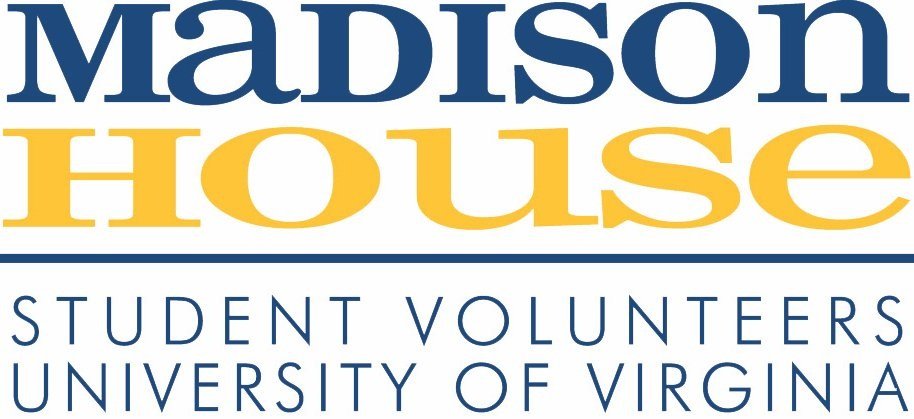Professor Kate Stephenson combines community engagement and writing skills in her first-year writing requirements. Essentially, her courses focus on community-based learning, which Professor Stephenson describes as the “intersection of activism and coursework”.
In ENWR 1520-02: Where We Live: Writing about Housing Equity and ENWR 1520-01: You are What You Eat … or Are You?: Writing about Food Equity, first-year UVA students have the unique ability to complete their writing requirement by actively collaborating with the Charlottesville community. Students have the opportunity to work at The Haven, UVA Student Garden, UVA Food Pantry, Loaves and Fishes, PVCC Community Garden, and Morven Kitchen Garden.
UVA Professor Kate Stephenson
Professor Stephenson’s idea emerged after observing students’ passions for social justice in her photography course. She wondered how she could get students more involved, which led to the idea to incorporate a hands-on service experience.
“I have always been involved in community work,” she explains. “At the time I was working with Loaves and Fishes, so the class started first as a food justice class.” Professor Stephenson noticed positive changes right away. “The students not only seemed more engaged, but the quality of their writing improved dramatically,” says Professor Stephenson, “perhaps because they felt a greater sense of purpose.”
This is Professor Stephenson’s fifth year teaching these courses. Each year, her students leave these ENWR sections with their own interpretations and understandings of community engaged learning after having these first-hand experiences in active volunteerism.
“It is a shift to learning from the community instead of about the community,” reflects Eleanor Steiner, who took the food justice course. She continues, “Community-based learning to me is the opportunity to have community-based interactions inform your learning in the classroom. It is a method of learning that requires reflection and, at times, discomfort and confrontation of your own beliefs.”
Students in Professor Stephenson’s classes collaborate and gain insight through service together.
Similarly, Geoffrey Lawrence, a current teaching fellow for the Food Justice course, says, “Community-based learning to me is about strengthening connections.” Geoffrey is grateful for the opportunity and shares, “The volunteering that students are involved in not only allows them to form connections with people outside of UVA, but also with their classmates outside of the classroom.”
Professor Stephenson echoes this idea, saying, “A community builds within the classroom and amongst the students.” From traveling together, volunteering together, and sharing experiences in class, the students form bonds with one other.
In her visits to The Haven Day Shelter in the Housing Equity ENWR, UVA undergraduate student Gretchen Neary notes, “In my opinion, it's the best way to learn because it answers the ‘why?’ Why are we learning about this? Why does this matter?”
Professor Stephenson agrees. “I think students love a chance to see what they are reading about in class come to life,” she says. “There is a lot of research that shows that when people volunteer and then have time to reflect on it or read about that issue, it becomes more meaningful and their volunteerism not only increases in terms of capability, but they tend to do it for longer.”
However, these courses would not be possible if not for the extensive contributions of the many students and community partners behind the scenes, and Madison House. “I could not do this without the support of Madison House. When I first started teaching this class five years ago, I received so much support from them.” Professor Stephenson continues, “I have a whole web of students, program directors, Madison House teaching fellows… there are probably 10 or 12 students working behind the scenes to make these classes work.”
At the end of the semester, students showcase their work at a Community Writing Symposium. They invite community partners, other community engaged classes in the Writing and Rhetoric Program, former students, administrators, faculty, friends, and family.
“This is the class I recommend to every incoming first-year student. It is one of my very favorites! Professor Stephenson is incredible,” advocates Gretchen.
Professor Stephenson also explains that her courses are not the only opportunities for students to get involved in community engaged learning; there are dozens of classes across the university, in various disciplines, that encourage students to work and collaborate with the Charlottesville community.
In fact, Geoffrey was inspired to take ENWR 2520, the Echols ENWR version of ENWR 1520, after taking a COLA seminar course titled Performing Acts of Justice and Equity, which “had a major community engagement component”. Geoffrey describes, “We took field trips to the Jefferson School, Live Arts, and many more places around Charlottesville—I decided early on that I wanted to take another class that involved community engagement/community-based learning.”
Second-year student Caroline Longest, who took the food justice course, noted, “I think it is a class so different from every other ENWR. I’m Pre-Comm and I don’t really get classes that enable you to step out into the community, so it was a really valuable experience.”
Professor Stephenson believes her courses are a wonderful “stepping stone” to get involved in similar classes at UVA and encourages students to seek out these incredible opportunities. Madison House, Engaged UVA, and specific courses themselves offer opportunities for students to step outside their classroom and have an impact on other communities.
By Cecilia Murphy




